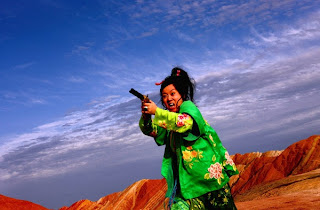Best Picture
Should win: 127 Hours
Will win: The King's Speech
The King shall reign supreme, even though Aron Ralston's epic one-man journey moved me more.
Best Director
Should win: David Fincher, The Social Network
Will win: Fincher
Many of the directors who made me excited about watching movies this year (Danny Boyle, Christopher Nolan, Derek Cianfrance) weren't nominated. Still, Fincher has been doing innovative work since the '80s, when he directed music videos for Aerosmith and Madonna. He deserves it.
Best Actor
Should win: Jesse Eisenberg, The Social Network
Will win: Colin Firth, The King's Speech
Mark Zuckerberg may not think we deserve his full attention, but Eisenberg certainly had mine for every second he was onscreen. Too bad Firth is a shoo-in.
Best Actress
Should win: Michelle Williams, Blue Valentine
Will Win: Annette Bening, The Kids Are All Right
Please, God: Make the Academy voters come to their senses. Don't let them give anything to Black Swan or Natalie Portman. How about Michelle Williams, who gave an almost uncomfortably revealing performance in Derek Cianfrance's amazing Blue Valentine? If not, then how about Annette Bening, even though she was way better in Mother and Child? Thanks, pal.
Best Supporting Actor
Should win: Christian Bale, The Fighter
Will win: Bale
I love every performance in this category, but when Christian Bale is good – like, American Psycho good – he can't be beat. I'm still not 100% convinced he wasn't actually on crack during the filming of this movie.
Best Supporting Actress
Should win: Hailee Steinfeld, True Grit
Will win: Steinfeld
The Academy wants to give something to the Coen Brothers' widely acclaimed Western, and Steinfeld presents the best opportunity. Her plucky, resourceful, deeply Protestant teenage avenger is one of the year's most riveting movie creations.
Best Original Screenplay
Should win: Mike Leigh, Another Year
Will win: Christopher Nolan, Inception
I think Nolan will pull a surprise upset, if only because the Academy wants all those fanboys to shut up about how he was robbed of directing noms this year and in 2008. But, forced to choose between Brits, I'll take Leigh over Nolan any day of the week.
Best Adapted Screenplay
Should win: Aaron Sorkin, The Social Network
Will win: Sorkin
He wrote the following, generation-defining line: "As if every thought that tumbled through your head was so clever it would be a crime for it not to be shared." I rest my case.
Best Animated Feature
Toy Story 3
Best Foreign Language Film
In a Better World
Best Documentary Feature
Restrepo
Best Film Editing
The Social Network
Best Cinematography
Inception
Best Visual Effects
Inception
Best Art Direction
The King's Speech
Best Costume Design
I Am Love
Best Makeup
The Wolfman (click here to read more about this category)
Best Original Score
Inception
Best Original Song
"If I Rise," 127 Hours






























